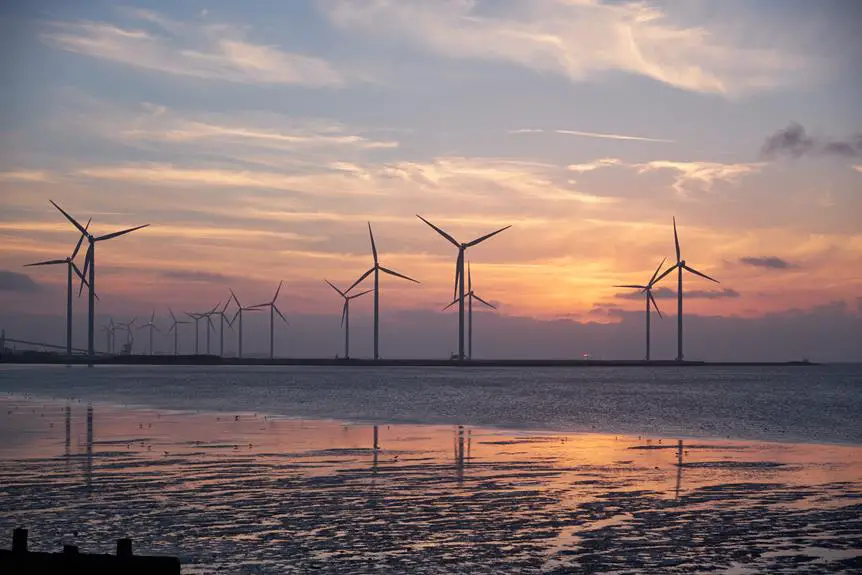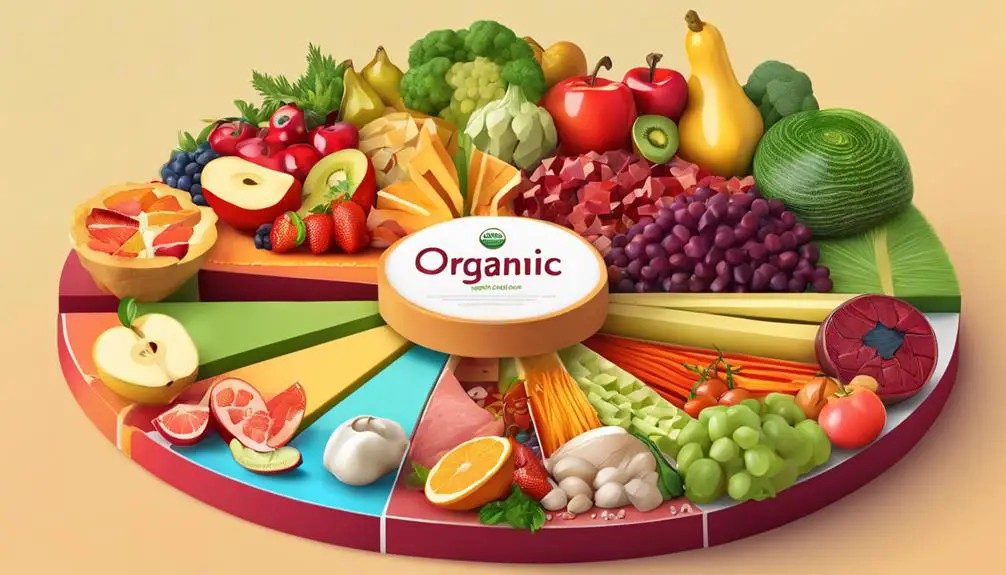The surge in bottled water consumption is not merely a passing trend but a reflection of evolving consumer preferences towards healthier options. As the statistics unveil a steady increase in consumption rates and a soaring demand for bottled water, questions arise about its broader implications.
Delving into the environmental impact, economic costs, and health concerns surrounding bottled water consumption can provide a comprehensive understanding of this ubiquitous beverage's multifaceted nature. From plastic pollution to energy consumption in production, the complexities of the bottled water industry beckon for a closer examination to grasp the full scope of its influence on society.
Key Takeaways
- Bottled water is over 300 times more expensive than tap water.
- Only 29% of plastic water bottles are recycled in the U.S.
- PET plastic bottles take around 700 years to decompose.
- Health concerns include contaminants like benzene and antimony leaching from bottles.
Environmental Impact of Bottled Water
The environmental ramifications of bottled water production and consumption are substantial. Evidence includes the staggering volume of pollutants emitted annually and the alarming rates of plastic bottle waste accumulation. Over 800,000 metric tons of pollutants are released each year from the production of plastic water bottles, significantly contributing to air and water pollution. Estimates suggest that more than 2,480,000 tons of plastic bottles are discarded annually, exacerbating environmental degradation. Despite efforts to promote recycling, only a quarter of purchased plastic bottles are recycled. This leads to increased pollution and waste accumulation in landfills and oceans. The longevity of plastic bottle decomposition is also concerning, with a discarded PET plastic water bottle taking approximately 700 years to break down. Approximately 2.5 million plastic bottles are discarded in the U.S. every hour, highlighting the urgent need for sustainable alternatives to mitigate these environmental impacts.
Economic Costs of Bottled Water
The economic costs of bottled water are notably higher than tap water, with a gallon of bottled water averaging around $1.22 compared to tap water's mere 0.004 cents per gallon. This stark price difference has a significant impact on consumer wallets, especially when considering the convenience factor and single-serving options that further increase the overall expense of choosing bottled water over tap water.
Understanding the production expenses, conducting a price comparison analysis, and recognizing the financial burden on consumers can provide insight into the economic implications of opting for bottled water.
Production Expenses Overview
Exemplifying the hidden economic costs, the production of bottled water entails a significant expenditure primarily driven by packaging expenses. The cost of packaging represents about 90% of the total production cost, highlighting the substantial financial investment required in this process.
Additionally, the manufacturing of plastic water bottles consumes double the amount of water they can hold, further escalating production expenses. Furthermore, the production of plastic water bottles results in the emission of millions of tons of carbon dioxide, imposing environmental and economic costs.
The transportation of bottled water also contributes to the economic burden, as fossil fuels are burned during this process. The reliance on petroleum companies for the raw material used in bottle manufacturing further impacts the overall economic costs of production.
Price Comparison Analysis
Highlighting the stark disparity in pricing between tap water and bottled water, the economic costs associated with choosing the latter are notably significant. While tap water costs around 0.004 cents per gallon, bottled water prices can soar up to $1.22 per gallon, making it over 300 times more expensive.
The inflated cost is further exacerbated by single-serving bottled water options. Opting for bottled water over tap water can lead to a substantial financial burden due to the convenience factor associated with bottled water. This substantial price difference emphasizes the economic implications of choosing bottled water, shedding light on the considerable disparity in pricing between the two water sources.
Impact on Wallets
Comparing the financial implications of choosing bottled water over tap water reveals a stark contrast in costs that significantly impacts consumers' wallets. Tap water costs approximately 0.004 cents per gallon, while bottled water can soar to around $1.22 per gallon, making bottled water over 300 times more expensive.
This vast difference in cost is further amplified by the prevalence of single-serving bottled water, driving up expenses. Over a span of 10 years, opting for bottled water could lead to spending upwards of $3,400. The considerable economic impact of this choice emphasizes the high cost of convenience associated with bottled water consumption.
Consumers need to consider these financial implications when deciding between bottled water and tap water.
Plastic Pollution From Bottled Water
Plastic pollution stemming from the production and disposal of bottled water has become a pressing environmental concern due to the staggering amount of waste generated annually. Over 800,000 metric tons of pollutants are emitted yearly from plastic bottle production alone, significantly contributing to environmental degradation.
Despite efforts to promote recycling, only a quarter of purchased bottles are actually recycled, leading to a substantial increase in pollution levels. Estimates suggest that over 2,480,000 tons of plastic bottles are discarded annually, further exacerbating the issue.
Shockingly, the production of water bottles in the U.S. alone requires approximately 17 million barrels of oil annually, highlighting the significant energy consumption associated with plastic bottle production. As a result, plastic bottles not only contribute to environmental pollution but also lead to a concerning accumulation of waste that poses a serious threat to ecosystems and wildlife.
Energy Consumption in Bottled Water Production
The energy consumption associated with the production of bottled water is a critical aspect that significantly impacts both the environment and resource utilization. The process of producing a plastic water bottle requires twice as much water as the bottle can hold, contributing to water scarcity issues.
Moreover, the manufacturing process emits millions of tons of carbon dioxide annually, exacerbating climate change. Fossil fuels are burned during the transportation of bottled water products, further increasing carbon emissions. The material used in bottle manufacturing is derived from petroleum companies, highlighting the reliance on non-renewable resources. These factors emphasize the high energy consumption and environmental impact of bottled water production.
As society becomes more environmentally conscious, addressing the energy-intensive nature of bottled water production is crucial in reducing its overall ecological footprint and promoting sustainability in the beverage industry.
Recycling Rates of Plastic Water Bottles
The recycling rates of plastic water bottles play a crucial role in reducing environmental harm associated with plastic bottle disposal. Awareness about the environmental impact of low recycling rates is essential to drive changes in consumer behavior and recycling habits.
Developing and improving recycling infrastructure is vital to increase the overall recycling rates and minimize plastic waste accumulation in landfills.
Plastic Bottle Disposal
With only 9% of plastic water bottles being recycled, urgent sustainable solutions are imperative to combat the significant waste accumulation and environmental consequences caused by the lack of recycling. National Geographic's findings that 91% of plastic water bottles are not recycled underscore the pressing need for action.
Approximately 2.5 million plastic bottles are discarded in the U.S. every hour, highlighting the alarming scale of the issue. The low recycling rate further exacerbates environmental pollution and waste management challenges. Improved recycling rates are crucial to mitigate the negative impacts of plastic bottle disposal.
Addressing this issue requires a collective effort to enhance recycling infrastructure, promote awareness, and encourage responsible consumer behavior to safeguard the environment for future generations.
Environmental Impact Awareness
Urgent attention must be directed towards raising awareness and improving recycling rates of plastic water bottles to address the significant environmental impact caused by their disposal.
- 91% of plastic water bottles end up in landfills, contributing to environmental pollution.
- A National Geographic study found that 91% of plastic bottles are not recycled, highlighting the recycling challenges.
- Over half a trillion water bottles are consumed annually, emphasizing the high demand for single-use plastic.
- The long decomposition time of plastic bottles in landfills poses environmental concerns.
- Urgent sustainable solutions are needed to address the environmental consequences of plastic bottle disposal.
Recycling Infrastructure Development
Developing robust recycling infrastructure is pivotal for enhancing the rates of plastic water bottle recycling in the United States. Currently, only 29% of plastic water bottles are recycled, with this rate showing no significant improvement over the years.
The lack of convenient recycling options plays a significant role in the low recycling rates observed. By investing in better recycling facilities and making recycling more accessible to the public, it is possible to increase the recycling rates of plastic water bottles.
Moreover, increasing public awareness and education about the importance of recycling and its environmental benefits can further contribute to boosting the rates of plastic water bottle recycling in the country.
Health Concerns Related to Bottled Water
Health concerns associated with bottled water include potential contamination, leaching of harmful chemicals from plastic bottles, and discrepancies in fluoride regulation compared to tap water. These issues raise questions about the safety and quality of bottled water, prompting consumers to consider alternatives.
Some key health concerns related to bottled water are:
- Tests by NRDC have shown that bottled water is not always purer or safer than tap water.
- PET plastic bottles can leach antimony, potentially causing health issues.
- Contaminants found in bottled water include benzene, mold, and fecal coliform.
- EPA regulates fluoride in tap water, but the FDA does not require disclosure in bottled water.
- Some bottled water is sourced from areas with insufficient fluoride for oral health.
These factors highlight the importance of understanding the potential health risks associated with consuming bottled water and the need for more stringent regulations and transparency in the industry.
Global Consumption Trends of Bottled Water
The escalating demand for bottled water on a global scale reflects a consistent upward trend in consumption patterns. In 2020, Americans alone consumed a staggering 15 billion gallons of bottled water, highlighting the significant role this beverage plays in daily hydration practices.
The per capita consumption of bottled water in the U.S. reached 45.2 gallons in the same year, showcasing the widespread adoption of this convenient and portable hydration option. With bottled water retail sales hitting $36.3 billion in 2020, it is evident that this industry continues to thrive and attract a substantial consumer base.
Notably, bottled water has consistently outperformed other packaged beverages in sales, underscoring its sustained popularity and preference among individuals seeking convenient and on-the-go hydration solutions. As global consumption of bottled water continues to rise steadily year after year, it is clear that this trend is likely to persist as consumers prioritize convenience, health, and hydration in their daily routines.
Conclusion
In conclusion, the statistics on bottled water consumption trends reveal a significant shift towards healthier hydration choices, with Americans consuming billions of gallons annually.
Despite the industry's growth and popularity, concerns about the environmental impact, economic costs, plastic pollution, energy consumption, recycling rates, and health implications associated with bottled water persist.
Global consumption trends also highlight the need for sustainable solutions to address these challenges and promote more eco-friendly alternatives.








